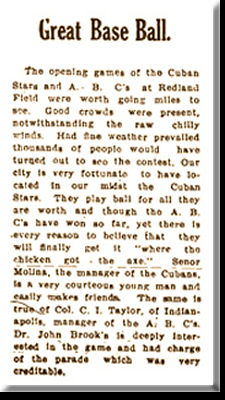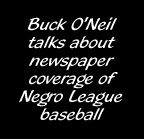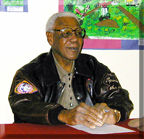
|
Article
from The Union,
May 7, 1921, |
"It
was the Negro press which also led the campaign for accurate record-keeping
in black baseball. . . . given the conditions
the players toiled under, it is no wonder that no one wanted to keep
an accurate scorebook. Sometimes a reserve pitcher kept the book; often
it was ignored." "For
short periods the Negro newspapers attempted to send sportswriters with
traveling teams, but it became too expensive and the newspapers settled
for by-mail submissions of team managers or local baseball enthusiasts."
"Black
sportswriters had to be versatile. Because most black papers operated
on slim budgets and even slimmer staffs, sportswriters were routinely
pulled off their regular beats to cover other stories." "Despite
the failure to record black baseball statistics accurately, the Negro
newspapers consistently harped upon the necessity to keep Negro league
baseball dignified." "Despite
the lack of accurate statistics in the sports pages, the black press
gave the teams exposure far beyond their hometowns. With
a conglomeration of hyperbole, tongue-in-cheek humor, and endless similes,
sportswriters such as Fay Young, Wendell Smith, Ric Roberts, and A.D.
Williams made the Negro leaguers heroes across the nation. As
fans became familiar with the legendary feats of players in the other
league, they demanded a World Series to determine the champion." "Though
most black newspapers remained loud voices, some had a regional circulation,
and a few had a national impact. Begun in 1919,
the weekly Kansas City Call had a circulation of more than twenty-five
thousand in the 1920s and became an important influence throughout the
Southwest. The Call carried detailed stories of the Monarchs and gave
readers comprehensive articles on NNL operations. The white Kansas
City Star did not report on all Monarchs games, but its coverage of
them tended to be unbiased and complete with box scores." |
||||||







